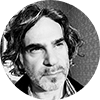Pharmaceutical companies, biotech firms, and medical communications agencies have relied on peer-to-peer programs to educate healthcare professionals on what they can do to better serve their patients. Unfortunately, the process we have become so comfortable with is beginning to show its age, and it is time for a change. As I wrote in my last post , it is time to boost the credibility of physicians who speak on behalf of the industry by ushering in a new era of key influencers (KIs).
To demonstrate how a perceived lack of credibility is affecting the way the medical community views some physician-speakers, here are some recent data: In a survey of 508 physicians, only 17% of respondents said industry-sponsored educational programs (non-CME) featuring physician-speakers had “a great deal” of influence on their prescribing habits. That is a shocking number when you realize how far science has advanced in the past 10 years. To put this into perspective, 47% of respondents said articles appearing in peer-reviewed medical journals had the same level of influence. Finally, while it has become evident that physicians are closing their doors to pharmaceutical sales representatives, information originating from this disappearing source carries a greater level of influence (18%) compared with that derived from key opinion leaders (KOLs). It is apparent that physicians are open to learning new things; however, it is crystal clear that the messenger is as important as the message. Here are some tips:
Step 1: Let’s stop making it all about the big names.
The conventional wisdom has always been to get the biggest name possible to speak on behalf of your brand. This is the “celebrity-endorsement” model, and it is really no longer relevant to our needs. Why? Because the big names are speaking for you and for your competition. Nowhere is this more evident than at a key congress. If you attend any of the industry-sponsored symposia, chances are that the overlap in faculty will make you cringe. If you are looking for answers, it is hard to get a straight one from someone who is speaking for everyone.
Step 2: Look for the rising stars.
Nothing gets the attention of a bored audience more than new blood — and there is a ton of it in medicine. Each year, post-graduate medical programs are pumping out thousands of fellows and residents looking for a chance to impress. Anyone who has graduated medical school in the past decade has sharpened their research and speaking chops and can relate to changing audience demographics. But more than that, they desire a chance to be heard and live outside the shadow of their former mentors. The best part is that these young go-getters were likely trained by the very KOLs you once (over)used. Take a chance on them — it could be the start of a beautiful friendship.
Step 3: Look for people who still treat patients.
It seems difficult to speak on behalf of four companies, participate in three clinical trials (simultaneously), attend six advisory boards a year, and still have the time to see your own patients. I am sure it happens, but how likely is that in reality? As we are moving toward changing the way we evaluate the value of treatment by adding concepts like comparative effectiveness, it is vital that we assess how all aspects of a patient’s life are changed by therapy. This can be very tough to do unless you are practicing in the real world.
At the end of the day, it should always be more about the content than the person who delivers the message. However, if your faith in or opinion of the speaker is compromised, then the message — no matter how good it is — will have little impact on altering patient outcomes. By changing the model we use to select, develop, and deploy our speakers, we can go from identifying key opinion leaders to creating key influencers.
Share with us how your company has changed the way you identify, select, train, and deploy your physician advocates.
RELATED TOPICS

Ken is a great deal more than just the president of a medical communications company. He is something of a hybrid. He’s part marketing manager, part creative director, and part copywriter. To the chagrin of his peers—but to the delight of his clients—Ken is a consummate perfectionist. As a former creative director for a high-end consumer agency, he challenged his creative teams to go beyond the mundane to produce work with real creative impact, something he’s just as fervent about today. From producing and directing TV commercials, to launching DTC and Rx-to-OTC switches, Ken brings his clients a world of experience in OTC pharmaceuticals as well as business, lifestyle, and high-end consumer products and services. Whether huddled with clients behind a mirror in a market research center in Houston, facilitating a strategic workshop in Madrid, or developing a global campaign either in the New Jersey or California office, Ken is always fully engaged, bringing “bestness” to all areas of his hectic but full life.
